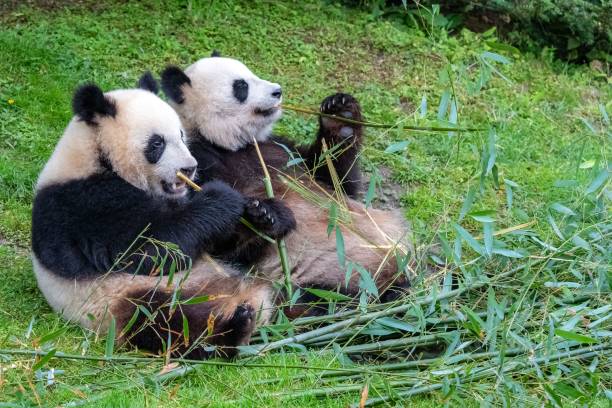The international effort to conserve Pandas as an endangered species between the United States and China is being interrogated for its legitimacy, as the exportation of the creatures to American zoos is reportedly incentivized by profit and breeding rather than conservancy.
A New York Times investigation, based on more than 10,000 pages of documents, found that Chinese authorities and American zoos have falsely presented a program that has struggled, and often failed, to meet its proposed objectives of saving the species. The records, photographs and videos obtained, many of them from the Smithsonian Institution Archives, offer a “detailed, unvarnished history” of the program, which reportedly reveals that, from the beginning, zoos saw panda cubs as a pathway to visitors, prestige and merchandise sales.
The panda program was created with the stated goal of saving the endangered species. Zoos would pay up to $1.1 million a year per pair, which would help China preserve the pandas’ habitat, and by following carefully crafted breeding recommendations, zoos would help improve the genetic diversity of the species with the goal of sending them back into the wild.
According to the NY Times review, scientists have turned to artificial breeding in zoos since pandas don’t easily mate in captivity. These practices have killed at least one panda, burned the rectum of another and caused vomiting and injuries in others, records show. Some of the pandas were partly awake for the painful procedures, and pandas in China have flickered in and out of consciousness as they were anesthetized and inseminated as many as six times in five days, which is far more often than experts recommend.
Going back to the 90s, a group of scientists known as “The Sperm Team” have used methods of electroejaculation, drugging some of the animals with unadulterated ketamine- which alone can leave an animal anxious and in pain. Researchers shot pandas with tranquilizer darts to anesthetize them, then laid them on stretchers or boards and collected semen from the males by inserting electrified probes into their rectums, while they were in the cold.
Experts also assert that breeding in breeding in American zoos has done little to improve genetic diversity because China typically sends animals abroad whose genes are already well represented in the population.
“I remember standing there with the cicadas screaming in the bamboo,” Kati Loeffler, a veterinarian who worked at a panda breeding center in Chengdu, China, during the program’s early years, said. “I realized, ‘Oh my God, my job here is to turn the well-being and conservation of pandas into financial gain.’”
Dr. Loeffler, who spent part of her time in Chengdu as a scholar working for the National Zoo in Washington, said that scientists there used anesthesia excessively and sloppily. She alleged that at one point, she abandoned protocol and jumped onto an examination table to cradle an animal as it was being anesthetized.
American zoos have a high demand for pandas, as the creatures bring waves of attendance and revenue, and China has eagerly provided them, with breeders receiving cash bonuses for every cub, according to the report.
Kimberly Terrell, who was director of conservation at the Memphis Zoo until 2017, said, “There was always pressure and the implication that cubs would bring money.” She also noted that zoo administrators insisted on inseminating its aging female panda every year, despite concerns among zookeepers that it was unlikely to succeed, which it never did.
Today, China has removed more pandas from the wild than it has freed, and no cubs born in American or European zoos, or their offspring, have ever been released, The Times found. Meanwhile, the number of wild pandas remains unknown because the Chinese government’s count is widely seen as flawed and politicized.
At the beginning of this century, 126 pandas lived in captivity. Today there are more than 700.
On Tuesday, a female and male panda arrived from China at the National Zoo in Washington, and are likely to be subjected to captive breeding. Meanwhile, a surplus of captive pandas in China has led to several new tourist attractions being built.












